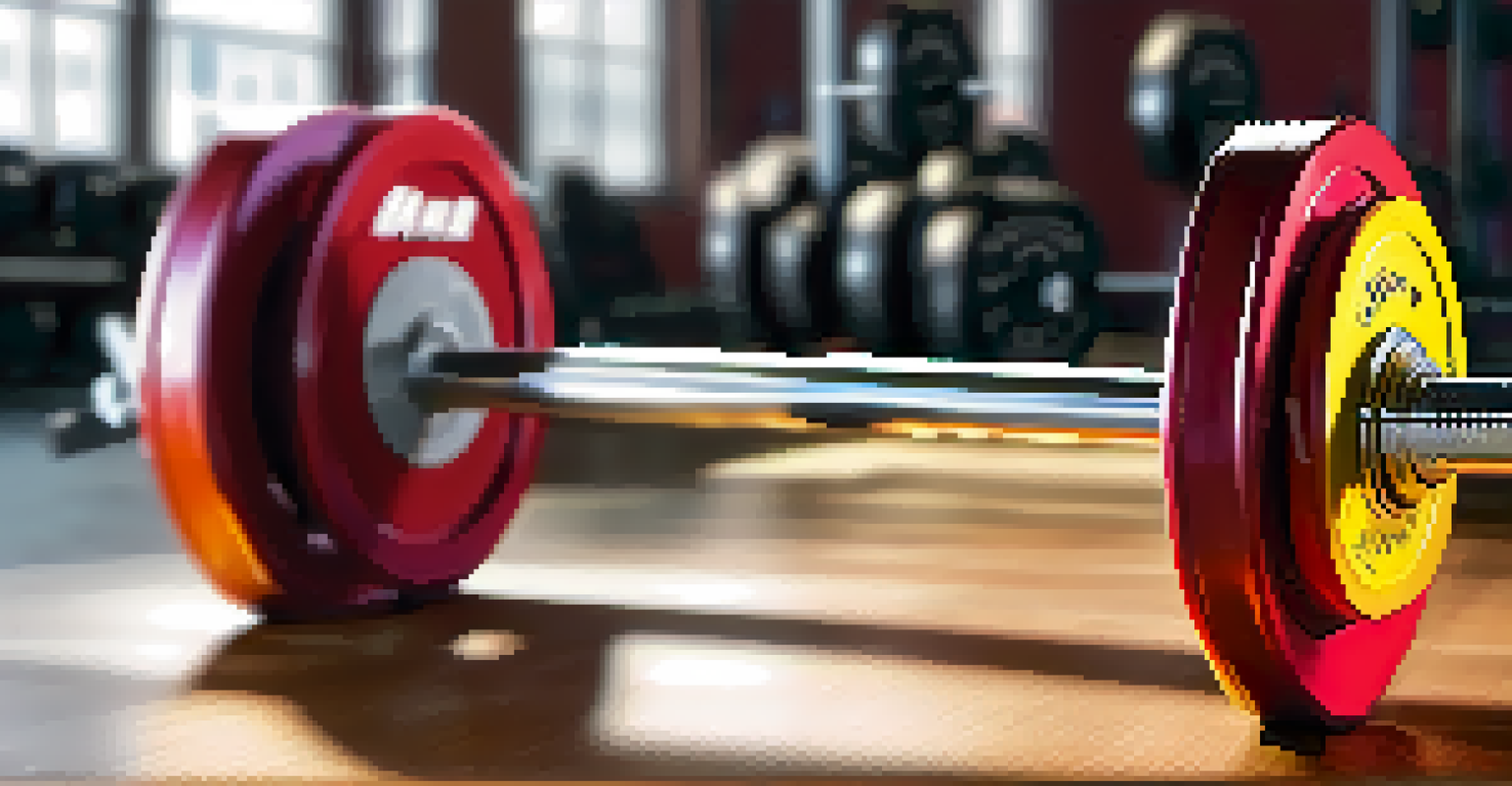Understanding Powerlifting: Weight Loss Through Strength Training

What is Powerlifting and How It Works
Powerlifting is a strength sport that focuses on three main lifts: the squat, bench press, and deadlift. Each of these lifts targets different muscle groups, promoting overall strength and muscle development. Unlike bodybuilding, which emphasizes aesthetics, powerlifting prioritizes functional strength and performance.
Strength does not come from physical capacity. It comes from an indomitable will.
The goal of powerlifting is to lift the maximum weight possible for a single repetition in each of the three lifts. This not only builds muscle but also increases your basal metabolic rate, which means you burn more calories even while at rest. So, if you're looking to shed some pounds, powerlifting is a great option to consider.
Moreover, powerlifting is accessible to everyone, regardless of fitness level. Whether you're a beginner or an experienced lifter, there's a way to incorporate these lifts into your training program, making it easier for you to achieve your weight loss goals.
The Science Behind Strength Training and Weight Loss
Strength training, including powerlifting, is effective for weight loss because it builds lean muscle mass. Muscle burns more calories than fat, even when you're not exercising, which means the more muscle you have, the more calories you burn throughout the day. This can significantly enhance your weight loss efforts over time.

Additionally, strength training can lead to an increase in your metabolic rate, a phenomenon known as excess post-exercise oxygen consumption (EPOC). After a powerlifting session, your body continues to burn calories as it recovers from the workout, which can aid further in weight loss.
Powerlifting Boosts Weight Loss
Powerlifting builds muscle mass, which increases your metabolic rate and helps you burn more calories, aiding in weight loss.
Moreover, incorporating high-intensity strength training workouts can improve your insulin sensitivity, which helps regulate blood sugar levels and can prevent weight gain. This means that strength training not only helps you lose weight but also plays a crucial role in maintaining a healthy body composition.
Benefits of Powerlifting for Weight Loss
Powerlifting offers a plethora of benefits beyond just weight loss. It helps improve your overall physical health by increasing bone density and joint stability, which are vital as you age. Moreover, the discipline and focus required in powerlifting can translate to other areas of your life, enhancing your mental toughness.
The only bad workout is the one that didn’t happen.
Another significant benefit is the community and support system that often comes with powerlifting. Many gyms and clubs focus on this sport, creating a sense of camaraderie that can motivate you to stick with your program. Engaging with like-minded individuals can make your weight loss journey not only effective but also enjoyable.
Powerlifting also encourages setting measurable goals, which is crucial for motivation. Whether you aim to increase your squat weight or improve your form, achieving these milestones can boost your confidence and keep you on track towards your weight loss goals.
How to Get Started with Powerlifting
Getting started with powerlifting is easier than you might think. First, find a gym that allows you to train with free weights and has the necessary equipment. Many gyms have specific areas dedicated to powerlifting, complete with squat racks and benches.
Next, consider working with a coach or experienced lifter who can help you learn the proper techniques for each lift. Proper form is crucial not only for maximizing your strength gains but also for preventing injuries. This guidance can be incredibly beneficial, especially if you're new to lifting.
Strength Training Enhances Health
In addition to weight loss, powerlifting improves overall physical health, increasing bone density and joint stability.
Lastly, start with lighter weights to build your foundation before gradually increasing the load. It's important to listen to your body and allow for recovery time, as this will help you progress safely and effectively on your weight loss journey.
Creating a Balanced Powerlifting Routine
A balanced powerlifting routine should incorporate the three main lifts, but also include accessory exercises that target other muscle groups. This prevents imbalances and reduces the risk of injury. For instance, consider adding exercises like rows, lunges, or shoulder presses to your regimen.
Moreover, it's essential to mix in cardiovascular workouts to enhance your overall fitness and support weight loss. High-intensity interval training (HIIT) can be particularly effective, as it boosts your heart rate and burns calories efficiently. Incorporating both strength and cardio will help you achieve a well-rounded fitness routine.
Finally, make sure to allow for rest and recovery days in your training schedule. Your muscles need time to repair and grow stronger after intense workouts, so don't skip these essential rest days. Proper recovery will aid in your weight loss efforts and keep you motivated.
Nutrition's Role in Powerlifting and Weight Loss
Nutrition is a crucial component of any weight loss program, and it plays a significant role in powerlifting as well. To support your strength training efforts, it's essential to consume a balanced diet rich in protein, healthy fats, and complex carbohydrates. Protein is particularly important as it aids in muscle repair and growth.
Consider tracking your macronutrient intake to ensure you're fueling your body appropriately. Many powerlifters aim for a protein intake of about 1.2 to 2.2 grams per kilogram of body weight, depending on their activity level and goals. This can help maximize your performance in the gym and enhance your weight loss journey.
Community and Support Matter
Joining a powerlifting community offers motivation and encouragement, making your weight loss journey more enjoyable and effective.
Additionally, staying hydrated is vital, as dehydration can hinder your performance and recovery. Aim to drink plenty of water throughout the day, especially before and after your workouts. Balancing your nutrition alongside your powerlifting routine will set you up for success in achieving your weight loss goals.
Tracking Progress and Staying Motivated
Tracking your progress in powerlifting can be incredibly motivating and insightful. Keep a training log to document your lifts, workouts, and how you feel after each session. This not only helps you see your improvements but also keeps you accountable to your goals.
Set realistic and achievable milestones for both your lifting and weight loss journey. Celebrating these small victories—like increasing your squat weight or losing a few pounds—can provide you with the motivation to stay committed to your routine. Remember, progress takes time, and consistency is key.

Lastly, don't hesitate to adjust your training or nutrition plan as needed. If you hit a plateau or feel unmotivated, consider changing your routine or seeking advice from a coach. Staying flexible and open to change will help you maintain your momentum and achieve long-term weight loss success through powerlifting.